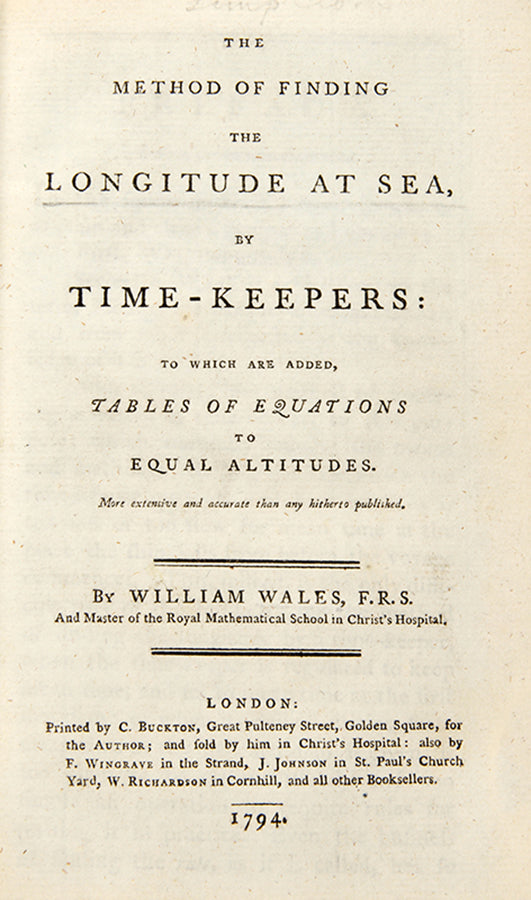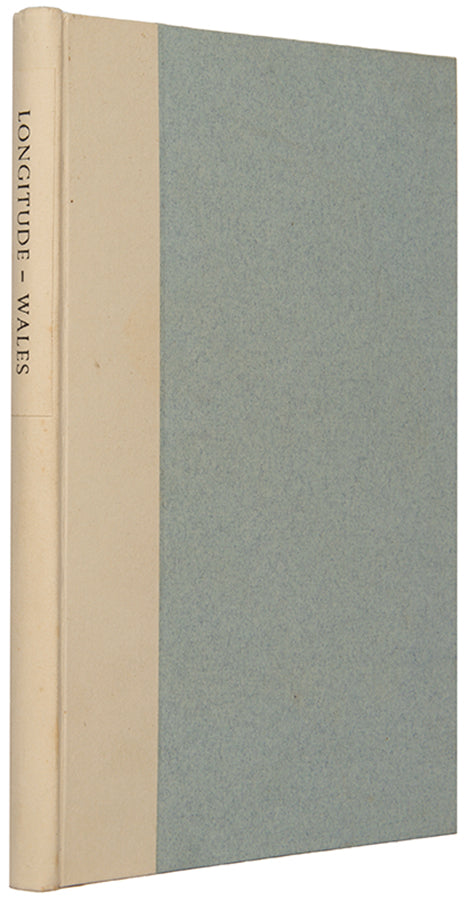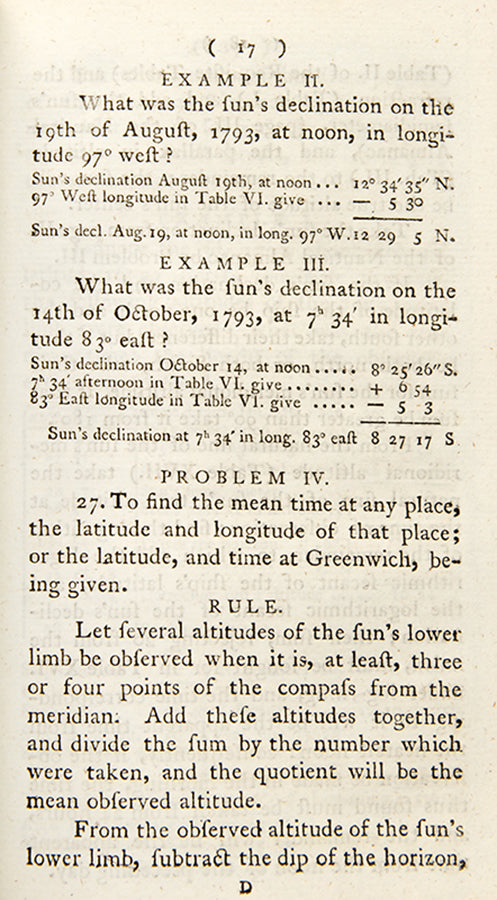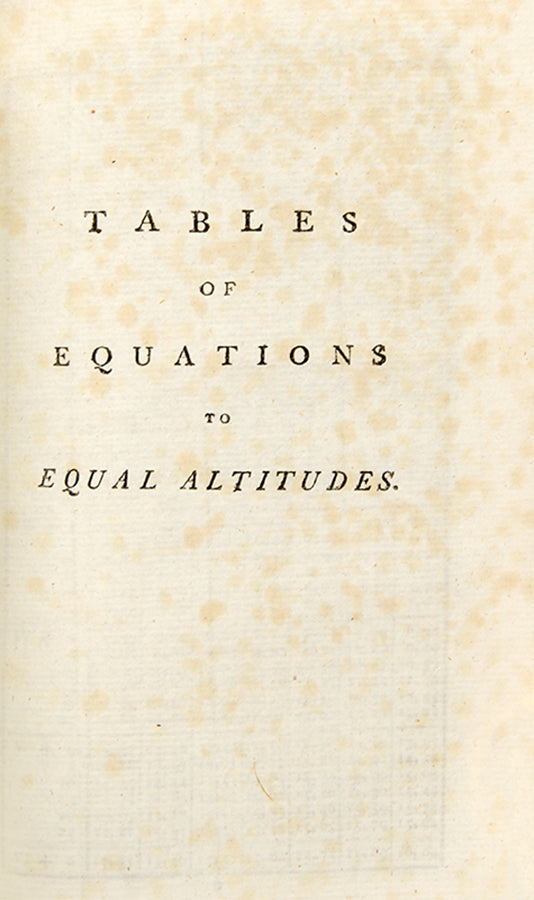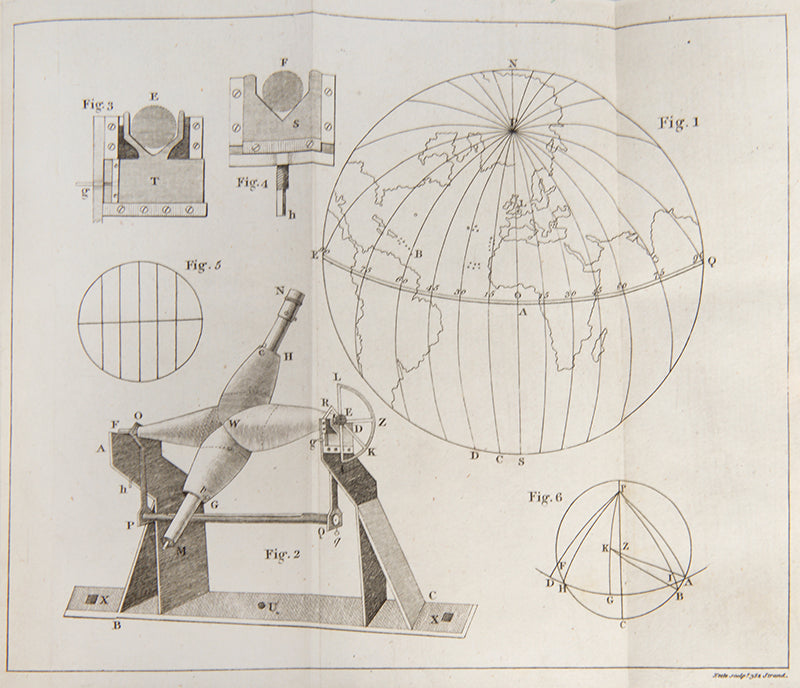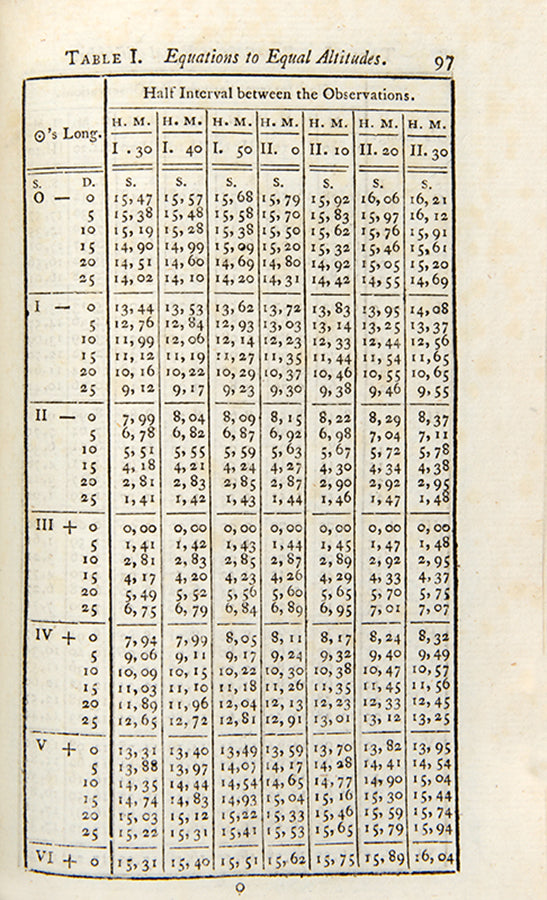The Method of Finding the Longitude at Sea, by Time-Keepers:
WALES, William.
The Method of Finding the Longitude at Sea, by Time-Keepers:
The Method of Finding the Longitude at Sea, by Time-Keepers:
To which are added, tables of equations to equal altitudes. More extensive and accurate than any hitherto published.
Stock Code 117124
London, C. Buckton for the author; F. Wingrave, J. Johnson, & W. Richardson, 1794
Little is known of William Wales's (1734-1798) early life, but he was born in Yorkshire and by the 1760s had become a proficient mathematician, commissioned to assist astronomer royal Nevil Maskelyne with calculations for the Nautical Almanac. He observed the 1769 transit of Venus at Hudson's Bay, and was then appointed one of two astronomers on Cook's second voyage, travelling with Cook on the Resolution.
'One of the important secondary objects of the voyage was the trying-out of the new longitude timekeepers; [watchmaker] Larcum Kendall's copy of Harrison's prizewinner was one of two taken by Wales. The two sloops sailed together from Plymouth on 13 July 1772. During the Resolution's three-year voyage around the world, twenty-one months of which were spent in the Pacific, Cook came to rely heavily on Wales for all matters astronomical and navigational—for ascertaining geographical position, for making scientific observations ashore and afloat, for instructing junior officers. "For Mr Wales, whose abilities is equal to his assiduity, lost no one observation that could possibly be obtained", wrote Cook in his journal in November 1774' (Oxford Dictionary of National Biography).
Wales probably had his navigation students at the Royal Mathematical School at Christ's Hospital in mind when he wrote the present work. It explains to beginners what longitude is, how it is derived, and the application of timekeepers to its calculation, and includes numerous practice problems.
First edition, 4to (19 x 11.5 cm); engraved folding plate by Neele, equations and tables within the text, bookplate of Frederick E. Ellis, contemporary errata note on verso of the final leaf of text, contents washed but a little spotting remaining; recent blue paper boards, white backstrip, printed paper spine label, new endpapers and blanks, a very good copy; 115pp.
Taylor, The Mathematical Practitioners of Hanoverian England p. 248; Hook & Norman, Norman Library of Science and Medicine 2174.
Couldn't load pickup availability
About us
About us
Shapero Rare Books is an internationally renowned dealer in antiquarian & rare books and works on paper.
Our Bookshop and Gallery can be found in the heart of Mayfair at 94 New Bond Street, where most of our stock is available to view and on public display.
We exhibit at major international art fairs, including TEFAF (Maastricht and New York), Frieze Masters, Art Miami and Masterpiece London, as well as antiquarian & rare book fairs including New York, Paris, London, Los Angeles, San Francisco and Hong Kong.



